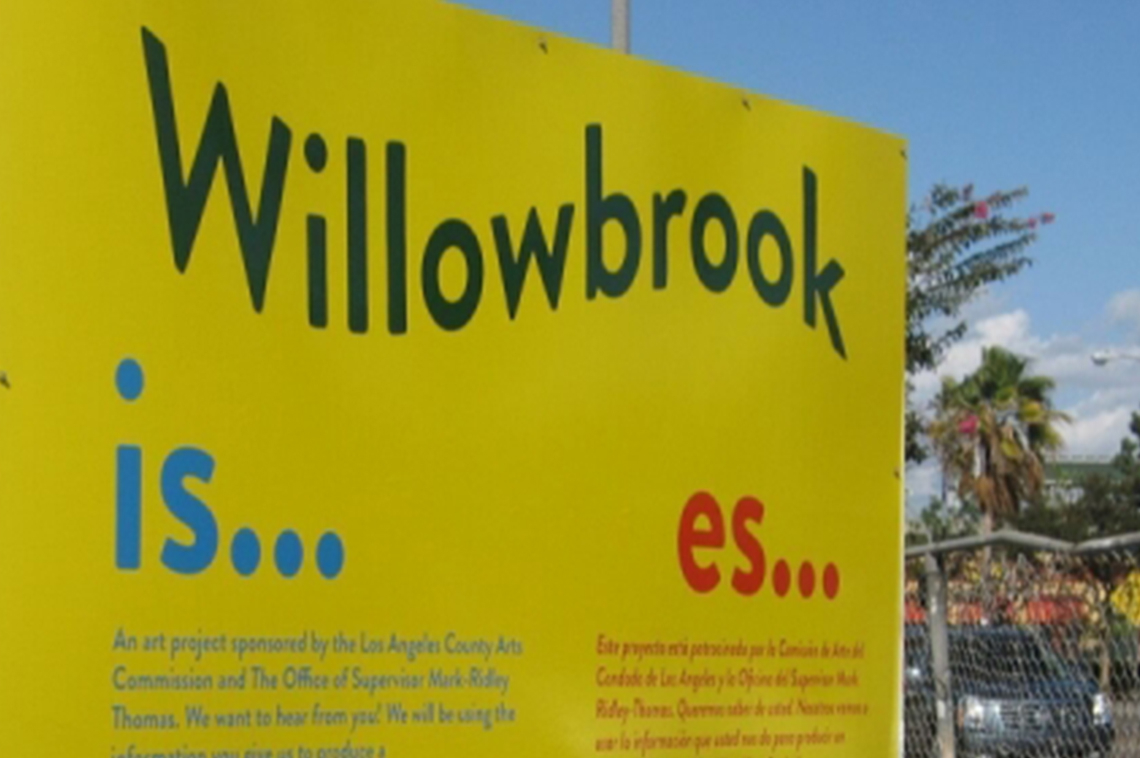
Understanding Local Cultural Assets in Willowbrook, CA
For decades outsiders defined the unincorporated South Los Angeles area of Willowbrook by what it lacked. Most perceived the neighborhood and its adjacent communities of Watts and Compton as ground zero for poverty, gang violence, and low educational attainment; critical issues included socio-economic challenges, cultural division, and limited access to healthcare. However, the area has seen significant investment by the county in recent years, including the reopening of the Martin Luther King Medical Campus in 2014 after its controversial shutdown in 2007. Willowbrook has had a number of projects on the table related to enhancing infrastructure, health services, and community development.
Yet even with the county supporting the area, it was not clear how Willowbrook's distinct identity would be reflected in these improvements. Planners and organizations had long focused on the community, but their plans had not always gained traction with the intended beneficiaries. The Los Angeles County Arts Commission (LACAC) developed a new arts-related asset map and visioning document that emerged from an in-depth community input process and was aimed precisely at the idea of having the community voice its own identity.
Art became a vehicle for galvanizing residents
Art also needed to characterize the distinct cultural identity of Willowbrook. LACAC engaged in a close conversation with the community to identify its needs and aspirations, translating these into a long-term program for the arts. LACAC tapped two key partners to implement the project: LA Commons and artist Rosten Woo. LA Commons—a Los Angeles-based nonprofit organization that facilitates and helps materialize local art practices—provided preliminary research, conducted community member interviews, and mapped the area's cultural assets. Rosten Woo was experienced with this type of work, having co-founded the Center for Urban Pedagogy, a nonprofit t organization that uses art to encourage civic participation. Woo contributed artistic vision and expertise in public engagement and urban planning.
The importance of local organization input
Numerous local organizations served as on-the-ground community organizers, conducting outreach, hosting focus groups, connecting the Project Willowbrook team with additional stakeholders, and giving team leaders feedback on the project. Their intensive engagement gave the project validity in the eyes of residents, which ultimately strengthened the project's content, audience, and relevance. This project was not the first time groups had developed visions for Willowbrook; the community had developed planning fatigue and felt tired of contributing to visions that, over the course of decades, went unrealized. So, for LACAC, the challenge was not only to create a visioning tool but also to develop real relationships with residents to overcome disillusionment with the planning process. The team split the project into two phases. For the first phase, LA Commons and LACAC did extensive interviews withcommunity members and mapped the area's existing cultural sites and activities.
This process allowed the team to understand its site and to develop relationships with key community stakeholders and residents. In Phase II, the team developed novel approaches to involving the community in communicating and developing the visioning document, culminating into Willowbrook is/Willowbrook es..., a magazine-like survey and visualization of the resident's talents, a community showcase, a home-and-garden tour and book, and the visioning document, all of which included the many contributions of community members themselves. Willowbrook is/Willowbrook es... is a community-driven document meant to serve as a way to coalesce different ideas outlined by residents and as a framework for the future of Willowbrook. Furthermore, the project gave different county departments a vision around which they could develop their own strategies in a coordinated way. As Letitia Ivins, assistant director of LACAC's Civic Art Program, said, "The project strengthened the County's approach to community development by ensuring that the place-defining cultural characteristics and opportunities of Willowbrook were acknowledged, supported, and written in the blueprints of its long-term future."
The project captured the community's imagination in ways that were far more enthusiastic than previous attempts at planning Willowbrook. This positive reception was evidenced by the community holding book launch parties for Woo to celebrate the community-sourced visioning document. In fact, the creative approach to urban planning outlined in the book sufficiently impressed the Office of Supervisor Mark Ridley-Thomas of Los Angeles County enough that it requested similar approaches for other unincorporated communities.
* This is shared with permission from the NEA book 'How to Do Creative Placemaking.' You can download the whole book free HERE.





